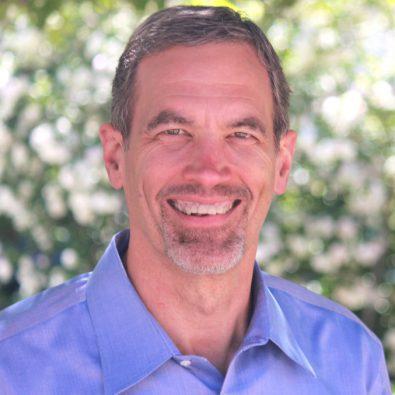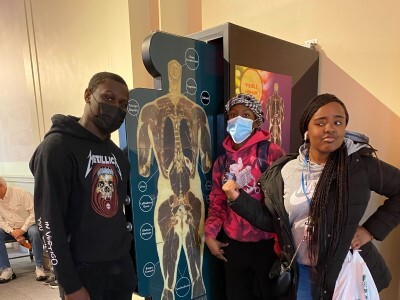New Designs for School
Nex-Gen Models Attack Problems, Leverage Opportunities
Topics

We’ve all had the experience of truly purposeful, authentic learning and know how valuable it is. Educators are taking the best of what we know about learning, student support, effective instruction, and interpersonal skill-building to completely reimagine schools so that students experience that kind of purposeful learning all day, every day.
It’s great if you think you have a good sense of how a next-generation school would work, but good luck trying to get funding.
Editor’s Note: Excerpts from this guest post originally appeared on the blog, "gettingsmart.com."
It’s great if you think you have a good sense of how a next-generation school would work, but good luck trying to get funding. Most school districts don’t have a process to respond to new school proposals much less funding them. And good luck getting a grant for a charter school before you get a charter approved (i.e., when you really need the money). That’s why, given the emerging potential for personalization, the Next Generation Learning Challenges (NGLC) is a timely and important program.
Launching in October 2011 with support from the Bill & Melinda Gates Foundation, NGLC issued an invitation for proposals for breakthrough school models for college readiness, “schools designed from the ground up to cultivate success on a rapidly growing scale.” (Stacey Childress outlined NGLC aims on HuffPost on Monday.)
NGLC intended to “spur next-generation development of schools with a relentless focus on personalization that enables students to individualize learning plans, proceed at a self-determined rate of mastery, apply relevant real-world experiences, and receive appropriate support regardless of classroom size.” The EDUCAUSE managed initiative was based on six beliefs:
- Outcomes matter;
- Education should be learner centered;
- Students learn differently and advance at varying rates;
- Technology can enable a personalized learning experiences;
- Tech-enabled models can loosen the resource constraints; and
- Models must be affordable and sustainable.
In December, NGLC released profiles of the 20 breakthrough models; 18 are secondary schools and 14 are charter management organizations. They are all interesting models of blended learning and important directional signals for what is to come. This is the first of three posts on NGLC breakthrough models. The three posts will address reform types, learning models, and system design elements reflected by the 20 grantees.
The 20 models reflect three important reform models, turnarounds, higher education partnerships, and the converting high performing charter networks to more scalable blended networks.
Turnarounds. Four of the grantees submitted blended school improvement models.
The Education Achievement Authority (EAA) of Michigan is a statewide improvement district (modeled after the Louisiana RSD). Chancellor John Covington, building on work he started in KC MO, is leading development of a blended competency-based turnaround model using a model platform, Agilix Buzz, from the makers of BrainHoney. The personalized learning system helps “Students map their learning paths, make choices and decisions around progression and pacing, conduct self-assessments, and learn to understand the consequences of their decisions,” and the system tracks it all. A 210 day year provides extra learning time. The improvement model could expand to serve dozens of schools across Michigan.
Generation Schools Network, working in Denver’s West High, is deploying a combination of restructuring and personalization: a long day and year, big blocks of time that reduce teacher loads, and half-class, mini-lab rotation. They use open and proprietary digital content sources and JumpRope to track competences.
Horry County Schools, South Carolina, is turning around a middle school with a “blended core academic curriculum and a carefully constructed system of supports.” It is a “competency-based model that both accelerates academic gains and develops students’ lifelong skills and dispositions.” One hundred “students will move among the four Learning Team classrooms based on their personalized learning plans, constructed around each student’s aspirations, learning preferences, and demonstrated proficiency.” They use PowerSchools and EdElements.
Matchbook Learning is a turnaround model working with middle schools in Detroit. The conversion focuses on school culture, teacher coaching, stakeholder engagement, and blended classrooms powered by EdElements. Students are “grouped into small and flexible groups based on student readiness, interests, learning style and profile, and specific instructional objectives.”
Higher Ed Partnerships. Four of the grantees proposed interesting post-secondary partnerships.
Cornerstone has a 20-year record of delivering high-quality Detroit schools. BrainHoney hosts learning content including Compass Learning, Apex, Revolution Prep, and Achieve 3000. To progress students must show mastery on a variety of assessments. Progress is noted on dashboards and reviewed weekly with a Relationship Manager. Differentiated roles also include Rigor Managers and Relevance Managers. Cornerstone Charter Health High School has a close partnership with the Detroit Medical Center. “Throughout their academic experience, students are encouraged to explore health- related careers and competencies through projects, coursework, and internships.” (See a Getting Smart feature.)
Da Vinci Schools uses project-based learning to engage Los Angeles students and Illuminate to track progress. The fourth Da Vinci school will be an early college high school in partnership with a community college. “Students benefit from easy access to college classes, extensive counseling and academic support, and a streamlined transfer process,” the case study reported.
Fayette County Public Schools in partnership with the University of Kentucky is preparing to open a STEAM academy. “Advisory groups will meet bi-weekly throughout the year to provide guidance in college and career readiness skills, personal goal setting and monitoring, and problem identification and solution finding.” “Students will take ownership of their learning by choosing their instructional delivery, schedule, and learning style and engaging in real-world problem-solving projects that interest them.” As soon as they are ready, students will be able to enroll in courses at UK. The school will host a variety of open content on Moodle.
USC Hybrid High“is open up to 12 hours a day, 7 days a week, and 310 days a year. Technology and differentiated staffing allow the school to innovate with time, staffing and space.” A project of the USC ed school, “The model allows for personalized and mastery-based learning and provides significant out- of-school learning opportunities and an advisory structure for social-emotional supports.” Students spend about half their time engaged in self-paced Apex courseware and the other half on “challenge-based projects, internships, dual-credit courses, and community service.”
Blended Networks. NGLC grantees also include a group of “no excuses” charter networks that optimized the standards-based data-driven cohort model, but see improvement and sustainability potential in incorporating personalized digital learning.
Aspire Public Schools, the largest K-12 network in California, is opening blended K-8 schools featuring a classroom rotation model in Memphis this year. The first school will feature “STEM-focused education, individualized technology, rich learning opportunities, and explicit instruction in computer coding skills.”
KIPP Chicago opened College Prep Middle school last year with a learning lab featuring i-Ready, LearnZillion, and Wowzers on Edmodo and Chromebooks with Eduvant dashboards.
Summit Public Schools is a four high school, Bay Area network that has been innovating with Khan Academy and Illuminate on a blended math program. Summit will open two more blended high schools in 2013.
Like Horry County, these charter models all incorporate technology but they start with college and career ready standards and a culture of high expectations.
NGLC is helping innovators break new ground in turnarounds, partnerships, and sustainable high performing networks. Tomorrow, we will explore how networks are incorporating experiential and project-based learning into blended models.




